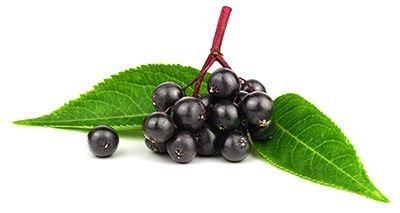Whether you accept it, avoid it or live somewhere in between, insurance coverage has become a defining issue for our profession. Patients increasingly expect to use their benefits, practitioners want to be compensated fairly for their time and expertise, and the system itself remains – at best – fragmented. The encouraging news is that coverage has expanded in meaningful ways. The challenging news is that reimbursement, across the board, remains inadequate.
Herbs & Botanicals
Elder (sambucus nigra or sambucus canadensis)
What is elder? What is it used for?
Elder is a type of fast-growing, shrub-like tree that grows in North America and Europe. There are several regional varieties of elder, some of which can reach a height of more than 12 feet, with small white flowers and berries that range in color from red to blue or black.
The berries are a valuable source of food for birds and other animals. Both the flowers and berries are used in herbal preparations; only those with blue or back berries are considered medicinal, however. Species of elder with red berries are not used in herbal medicine.
Elder berries contain a considerable amount of vitamins A, B and C, along with various flavonoids, tannins and amino acids. The flowers contain similar elements and are also praised for their tonic properties.
Elder has been used as both a food and a form of medicine for centuries. In many parts of Europe, elderberries are used to create a type of elderberry wine. The flowers have been used by herbalists to treat skin conditions and infections, and to promote wound healing. Studies in Europe have shown that syrups made from elderberry, along with extracts taken from elder flowers, can help treat influenza.
How much elder should I take?
For treating influenza and related conditions, some herbalists may recommend a syrup containing elderberry extract at a dose of 1-3 teaspoons for children, and 2-6 teaspoons for adults, taken twice daily. Alternately, an elder tea can be made using dried elder flowers steeped in boiling water for 10 to 15 minutes and drunk up to three times per day. Crushed elder flowers can also be incorporated into a poultice and applied to the skin for skin infections.
 What forms of elder are available?
What forms of elder are available?
Elder is available in a variety of forms, including extracts, syrups, teas, and infusions. As a food, elderberry is sold in wines, pies, and lemonades.
What can happen if I take too much elder? Are there any interactions I should be aware of? What precautions should I take?
Elderberries are mildly poisonous, and can cause vomiting if eaten raw or unripe. Cooking elderberries will remove toxicity. The roots, stems and leaves are also considered poisonous; supplements or preparations containing any of these parts of the elder should be avoided.
As of this writing, there are no known drug interactions associated with elderberry. As always, make sure to consult with a licensed health care provider before taking elder flowers, elderberries, or any other herbal remedy or dietary supplement.
References
- Foster S. 101 Medicinal Plants. Loveland, CO: Interweave Press, 1998, pp. 72-3.
- Gruenwald J, Brendler T, Jaenicke C, et al. (eds). PDR for Herbal Medicines. Montvale, NJ: Medical Economics, 1998, pp.1116-7.
- Newall CA, Anderson LA, Phillipson JD. Herbal Medicines: A Guide for Health-Care Professionals. London: The Pharmaceutical Press, 1996, pp.104-5.
- Uncini Manganelli RE, Zaccaro L, Tomei PE. Antiviral activity in vitro of urtica dioica L., parietaria diffusa M. et K. and sambucus nigra L. J Ethnopharmacol April 2005;26;98(3):323-327.
- Youdim KA, Martin A, Joseph JA. Incorporation of the elderberry anthocyanins by endothelial cells increases protection against oxidative stress. Free Radical Biol Med 2000;29:51-60.


